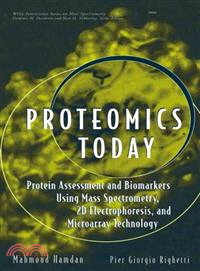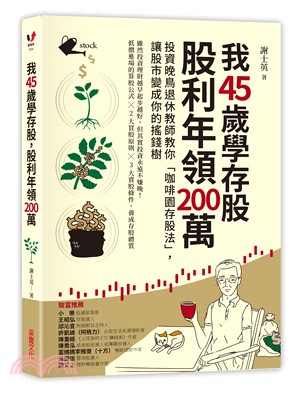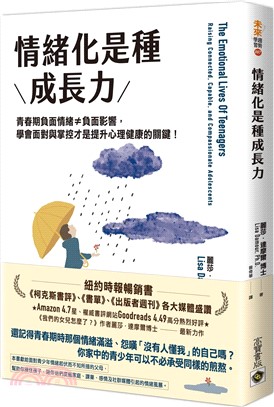Proteomics Today: Protein Assessment And Biomarkers Using Mass Spectrometry, 2D Electrophoresis, And Microarray Technology
商品資訊
定價
:NT$ 8098 元優惠價
:90 折 7288 元
若需訂購本書,請電洽客服 02-25006600[分機130、131]。
相關商品
商品簡介
作者簡介
名人/編輯推薦
目次
商品簡介
The last few years have seen an unprecedented drive toward the application of proteomics to resolving challenging biomedical and biochemical tasks. Separation techniques combined with modern mass spectrometry are playing a central role in this drive. This book discusses the increasingly important role of mass spectrometry in proteomic research, and emphasizes recent advances in the existing technology and describes the advantages and pitfalls as well.
* Provides a scientifically valid method for analyzing the approximatey 500,000 proteins that are encoded in the human genome
* Explains the hows and whys of using mass spectrometry in proteomic analysis
* Brings together the latest approaches combining separation techniques and mass spectrometry and their application in proteome analysis
* Comments on future challenges and how they may be addressed
* Includes sections on troubleshooting
* Provides a scientifically valid method for analyzing the approximatey 500,000 proteins that are encoded in the human genome
* Explains the hows and whys of using mass spectrometry in proteomic analysis
* Brings together the latest approaches combining separation techniques and mass spectrometry and their application in proteome analysis
* Comments on future challenges and how they may be addressed
* Includes sections on troubleshooting
作者簡介
MAHMOUD HAMDAN, PhD, is the head of Mass Spectrometry & Separation Technologies, GlaxoSmithKline, Verona, Italy.
PIER GIORGIO RIGHETTI, PhD, is Professor of Biochemistry and director of the Laboratory of Proteome Science at the University of Verona, Italy.
PIER GIORGIO RIGHETTI, PhD, is Professor of Biochemistry and director of the Laboratory of Proteome Science at the University of Verona, Italy.
名人/編輯推薦
"I highly recommend this book for anyone planning to get involved in proteomics technology or for one who is already involved…it provides an entertaining insight on the field..." (Microbe, March 2006)
"...a must reference for anyone interested in proteomics. For me, if Proteomics Today is not in my backpack it will be within arms reach as a great reference to have on hand as I plan future experiments." (Journal of the American Society for Mass Spectrometry, January 2006)
"…the book is highly recommended to all scientists interested in protein separation science, and well-thumbed copies will certainly be present in every self-respecting proteomic laboratory." (Proteomics, July 2005)
‘This book is well written and thus easy to read. It contains valuable information and extensive references for readers from a variety of backgrounds.’ (Analytical and Bioanalytical Chemistry, 12 January 2007)
"…well-written and thus easy to read. It contains valuable information and extensive references for readers from a variety of backgrounds." (Analytical and Bioanalytical Chemistry, January 2007)
"...a must reference for anyone interested in proteomics. For me, if Proteomics Today is not in my backpack it will be within arms reach as a great reference to have on hand as I plan future experiments." (Journal of the American Society for Mass Spectrometry, January 2006)
"…the book is highly recommended to all scientists interested in protein separation science, and well-thumbed copies will certainly be present in every self-respecting proteomic laboratory." (Proteomics, July 2005)
‘This book is well written and thus easy to read. It contains valuable information and extensive references for readers from a variety of backgrounds.’ (Analytical and Bioanalytical Chemistry, 12 January 2007)
"…well-written and thus easy to read. It contains valuable information and extensive references for readers from a variety of backgrounds." (Analytical and Bioanalytical Chemistry, January 2007)
目次
PREFACE TO PART I.
ACKNOWLEDGMENT.
I: INTRODUCTION TO PART I.
1. INSTRUMENTATION AND DEVELOPMENTS.
1.1 Introduction.
1.2 Ionization Techniques for Macromolecules.
1.3 Examples on Analytical Solutions Based on FAB–MS.
1.4 Electrospray Ionization.
1.5 Matrix-Assisted Laser Desorption Ionization.
1.6 Ion Detection.
1.7 Types of Analyzers.
1.8 Hybrid Analyzers.
1.9 Tandem Mass Spectrometry.
1.10 Current MS Instrumentation in Proteome Analyses.
1.11 Current MS-Based Proteomics.
1.12 Recent Achievements and Future Challenges.
1.13 Concluding Remarks.
References.
2. PROTEOMICS IN CANCER RESEARCH.
2.1 Introduction.
2.2 Pancreatic Ductal Adenocarcinoma.
2.3 Proteomic Analysis of Human Breast Carcinoma.
2.4 Proteomic Profiling of Chemoresistant Cancer Cells.
2.5 Signal Pathway Profiling of Prostate Cancer.
2.6 Emerging Role of Functional and Activity-Based Proteomics in Disease Understanding.
2.7 Activity-Based Protein Profiling.
2.8 Probing Protein Functions Using Chromophore-Assisted Laser Inactivation.
2.9 Role of Protein–Tyrosine Kinases.
2.10 Concluding Remarks and Future Prospects.
References.
3. CURRENT STRATEGIES FOR PROTEIN QUANTIFICATION.
3.1 Introduction.
3.2 Global Internal Standard Technology.
3.3 Differential In-Gel Electrophoresis.
3.4 Quantification of Modified Proteins.
3.5 Comments and Considerations.
3.6 Other Approaches.
3.7 Emerging Role of Microfluidic Devices.
3.8 Concluding Remarks.
References.
II: PROTEOMICS TODAY: SEPARATION SCIENCE AT WORK.
4. CONVENTIONAL ISOELECTRIC FOCUSING IN GEL MATRICES AND CAPILLARIES AND IMMOBILIZED pH GRADIENTS.
4.1 Introduction.
4.2 Conventional Isoelectric Focusing in Amphoteric Buffers.
4.3 Immobilized pH Gradients.
4.4 Capillary Isoelectric Focusing.
4.5 Separation of Peptides and Proteins by CZE in Isoelectric Buffers.
4.6 Conclusions.
References.
5. SODIUM DODECYL SULFATE–POLYACRYLAMIDE GEL ELECTROPHORESIS.
5.1 Introduction.
5.2 SDS–Protein Complexes: a Refinement of the Model.
5.3 Theoretical Background of Mr Measurement by SDS–PAGE.
5.4 Methodology.
5.5 Gel Casting and Buffer Systems.
5.6 Blotting Procedures.
5.7 Conclusions.
References.
6. TWO-DIMENSIONAL MAPS.
6.1 Introduction.
6.2 Some Basic Methodology Pertaining to 2D PAGE.
6.3 Prefractionation Tools in Proteome Analysis.
6.4 Multidimensional Chromatography Coupled to MS.
6.5 Protein Chips and Microarrays.
6.6 Nondenaturing Protein Maps.
6.7 Spot Matching in 2D Gels via Commercial Software.
6.8 Conclusions.
References.
INDEX.
ACKNOWLEDGMENT.
I: INTRODUCTION TO PART I.
1. INSTRUMENTATION AND DEVELOPMENTS.
1.1 Introduction.
1.2 Ionization Techniques for Macromolecules.
1.3 Examples on Analytical Solutions Based on FAB–MS.
1.4 Electrospray Ionization.
1.5 Matrix-Assisted Laser Desorption Ionization.
1.6 Ion Detection.
1.7 Types of Analyzers.
1.8 Hybrid Analyzers.
1.9 Tandem Mass Spectrometry.
1.10 Current MS Instrumentation in Proteome Analyses.
1.11 Current MS-Based Proteomics.
1.12 Recent Achievements and Future Challenges.
1.13 Concluding Remarks.
References.
2. PROTEOMICS IN CANCER RESEARCH.
2.1 Introduction.
2.2 Pancreatic Ductal Adenocarcinoma.
2.3 Proteomic Analysis of Human Breast Carcinoma.
2.4 Proteomic Profiling of Chemoresistant Cancer Cells.
2.5 Signal Pathway Profiling of Prostate Cancer.
2.6 Emerging Role of Functional and Activity-Based Proteomics in Disease Understanding.
2.7 Activity-Based Protein Profiling.
2.8 Probing Protein Functions Using Chromophore-Assisted Laser Inactivation.
2.9 Role of Protein–Tyrosine Kinases.
2.10 Concluding Remarks and Future Prospects.
References.
3. CURRENT STRATEGIES FOR PROTEIN QUANTIFICATION.
3.1 Introduction.
3.2 Global Internal Standard Technology.
3.3 Differential In-Gel Electrophoresis.
3.4 Quantification of Modified Proteins.
3.5 Comments and Considerations.
3.6 Other Approaches.
3.7 Emerging Role of Microfluidic Devices.
3.8 Concluding Remarks.
References.
II: PROTEOMICS TODAY: SEPARATION SCIENCE AT WORK.
4. CONVENTIONAL ISOELECTRIC FOCUSING IN GEL MATRICES AND CAPILLARIES AND IMMOBILIZED pH GRADIENTS.
4.1 Introduction.
4.2 Conventional Isoelectric Focusing in Amphoteric Buffers.
4.3 Immobilized pH Gradients.
4.4 Capillary Isoelectric Focusing.
4.5 Separation of Peptides and Proteins by CZE in Isoelectric Buffers.
4.6 Conclusions.
References.
5. SODIUM DODECYL SULFATE–POLYACRYLAMIDE GEL ELECTROPHORESIS.
5.1 Introduction.
5.2 SDS–Protein Complexes: a Refinement of the Model.
5.3 Theoretical Background of Mr Measurement by SDS–PAGE.
5.4 Methodology.
5.5 Gel Casting and Buffer Systems.
5.6 Blotting Procedures.
5.7 Conclusions.
References.
6. TWO-DIMENSIONAL MAPS.
6.1 Introduction.
6.2 Some Basic Methodology Pertaining to 2D PAGE.
6.3 Prefractionation Tools in Proteome Analysis.
6.4 Multidimensional Chromatography Coupled to MS.
6.5 Protein Chips and Microarrays.
6.6 Nondenaturing Protein Maps.
6.7 Spot Matching in 2D Gels via Commercial Software.
6.8 Conclusions.
References.
INDEX.
主題書展
更多
主題書展
更多書展本週66折
您曾經瀏覽過的商品
購物須知
外文書商品之書封,為出版社提供之樣本。實際出貨商品,以出版社所提供之現有版本為主。部份書籍,因出版社供應狀況特殊,匯率將依實際狀況做調整。
無庫存之商品,在您完成訂單程序之後,將以空運的方式為你下單調貨。為了縮短等待的時間,建議您將外文書與其他商品分開下單,以獲得最快的取貨速度,平均調貨時間為1~2個月。
為了保護您的權益,「三民網路書店」提供會員七日商品鑑賞期(收到商品為起始日)。
若要辦理退貨,請在商品鑑賞期內寄回,且商品必須是全新狀態與完整包裝(商品、附件、發票、隨貨贈品等)否則恕不接受退貨。
























